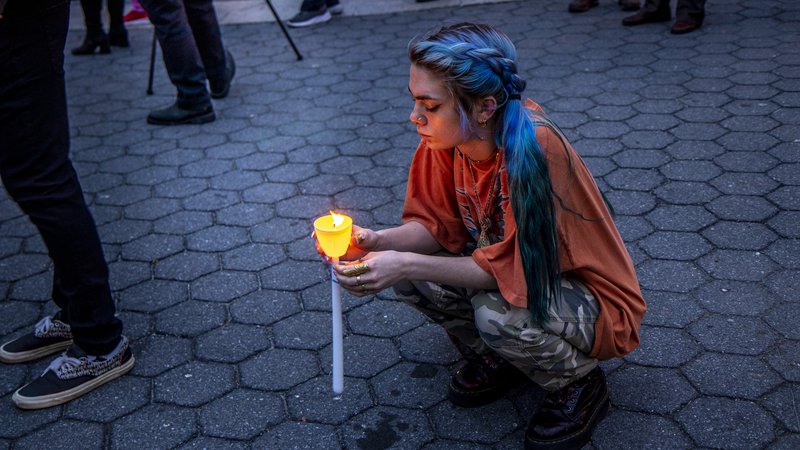“Guns and Grief” is a blog post series by Solomon Acevedo, Deputy Public Advocate for Justice, Health Equity and Safety. The series will explore the mental health impacts of gun violence, charting a way forward for New York City and building off our office’s recent panel discussion, Grief and Guns: Understanding Gun Violence and Mental Health.
Content warning: This blog post includes mention of gun violence, death and homicide, and substance use and paraphernalia. Please take care. Mental health support is available from National Alliance on Mental Illness of New York City (NAMI-NYC).
Guns and Grief | Part I
On a cold evening during the fall of 1990, gun violence arrived at my front door. Raised during the crack epidemic in New York City, my parents always warned of the dangers that lurked beyond our cozy family unit—my safe haven in the midst of total chaos. However, it wasn’t until that tragic evening that I would realize their fears manifested. Like any other Wednesday evening, I played with my G.I. Joe action figures, ironically playing out scenarios of cops and robbers seated in the hallway of my apartment inches from my front door. My parents lay in their bedroom watching the evening news while my two older brothers sat in the living room glued to an episode of Doogie Howser, M.D. Amidst the backdrop of the computerized melodies playing on the TV, I heard arguing on the other side of the front door. One voice was familiar. My next door neighbor, Pascal, the uncle of my best friend, responded by speaking Spanish to two other voices, who yelled at him with indistinct commands that my nine-year-old brain could not process. I then heard his jingling keys slap to the ground followed by muffled cracking glass from within his paper grocery bags smashing onto the marble tiles of the building's hallway. And Pascal uttered the words “Please! Stop! No!”.
The following sixty seconds replay in slow motion even as I write this—the consequences of post-traumatic stress. Eight loud cannon sounds jumbled amongst yelping and cries for help. I stared motionless at my front door only to be jolted from my trance by the sounds of my parents and brothers screaming for me to move away from the door. I walked backwards slowly, still clutching action figures in each hand, listening to the fading footsteps of the killers. Seconds later, my oldest brother, Carlos yanked out the police lock bar and swung open the door, revealing Pascal’s bloody body wriggling towards the building's elevator. My mother quickly ushered me into my bedroom a few feet from the door holding a hand over each of my eyes. By then it was too late to be blinded from the horror of homicide.
In that era, Washington Heights rarely gained the attention from the media when reporting the violence overriding a once peaceful diverse mosaic of immigrants. Stories of murder were not uncommon in the city, so Pascal's death was not a notable headline, or breaking news. There was no press conference held by the NYPD, or response from community activists. The next morning, I ducked under the yellow tape from the crime scene and tip-toed over the sticky remnants of the blood streaks left by Pascal’s body. I worried that the killers would return while I waited for the elevator on my way to school. I would never feel safe again in the place I called home.
At school, my best friend and I chose not to play any games at recess. Together, we spoke on the details of his uncle’s murder, doing our best to make sense of the shooting. Walking through the schoolyard, the crunching of empty crack vials underneath our sneakers formed the rhythm of our conversation, but we came to no comforting conclusions, or remedies for the guns that had caused our grief.
Part II will be available soon on our blog.
By Deputy Public Advocate for Justice, Health Equity and Safety Solomon Acevedo
Image: Caroll Campos for the New York City Public Advocate's Office. From the "Hour of Healing: Turn Grief Into Action" vigil for victims of mass shootings in Uvalde, Texas, Buffalo, New York, and elsewhere. May 26, 2022.
